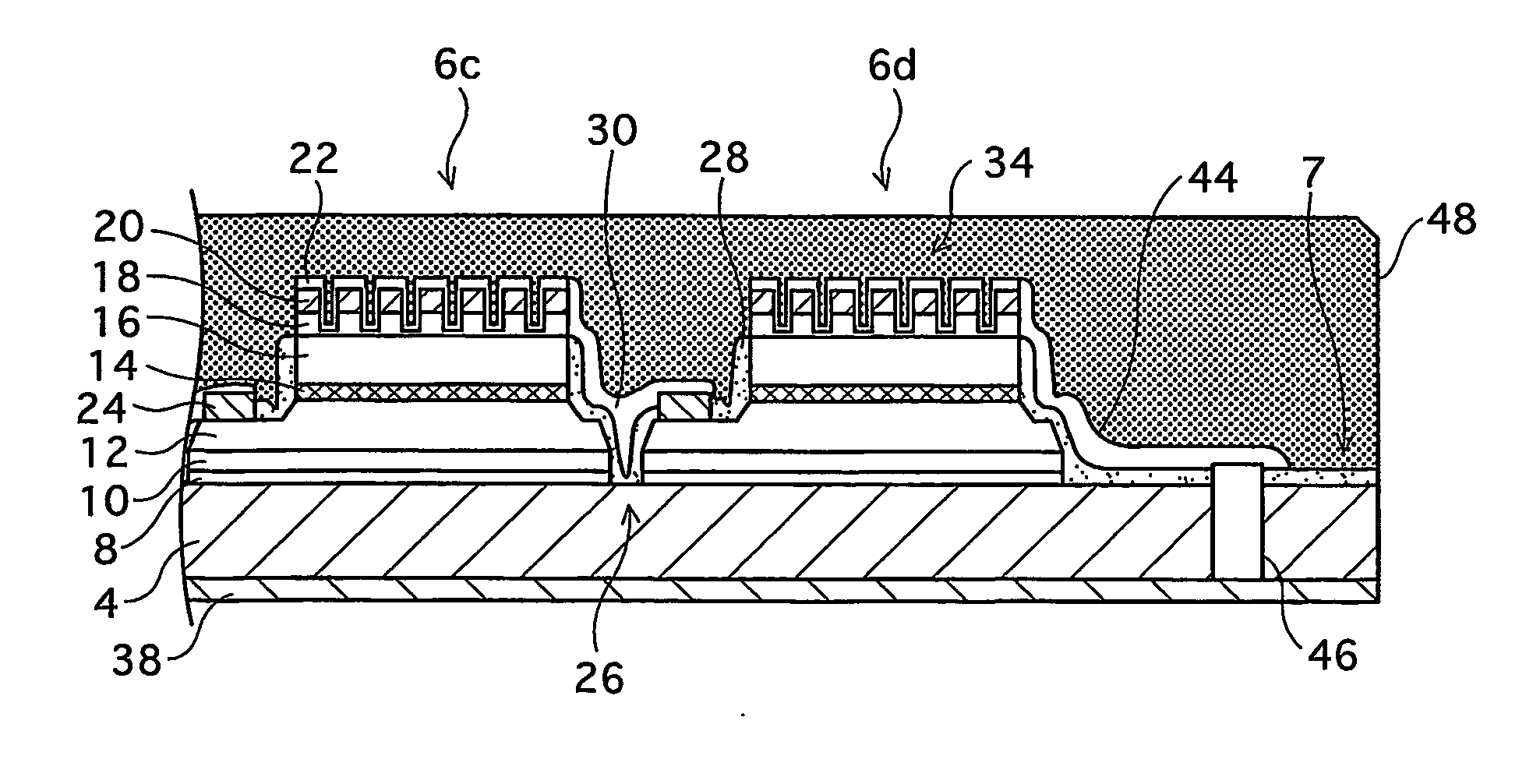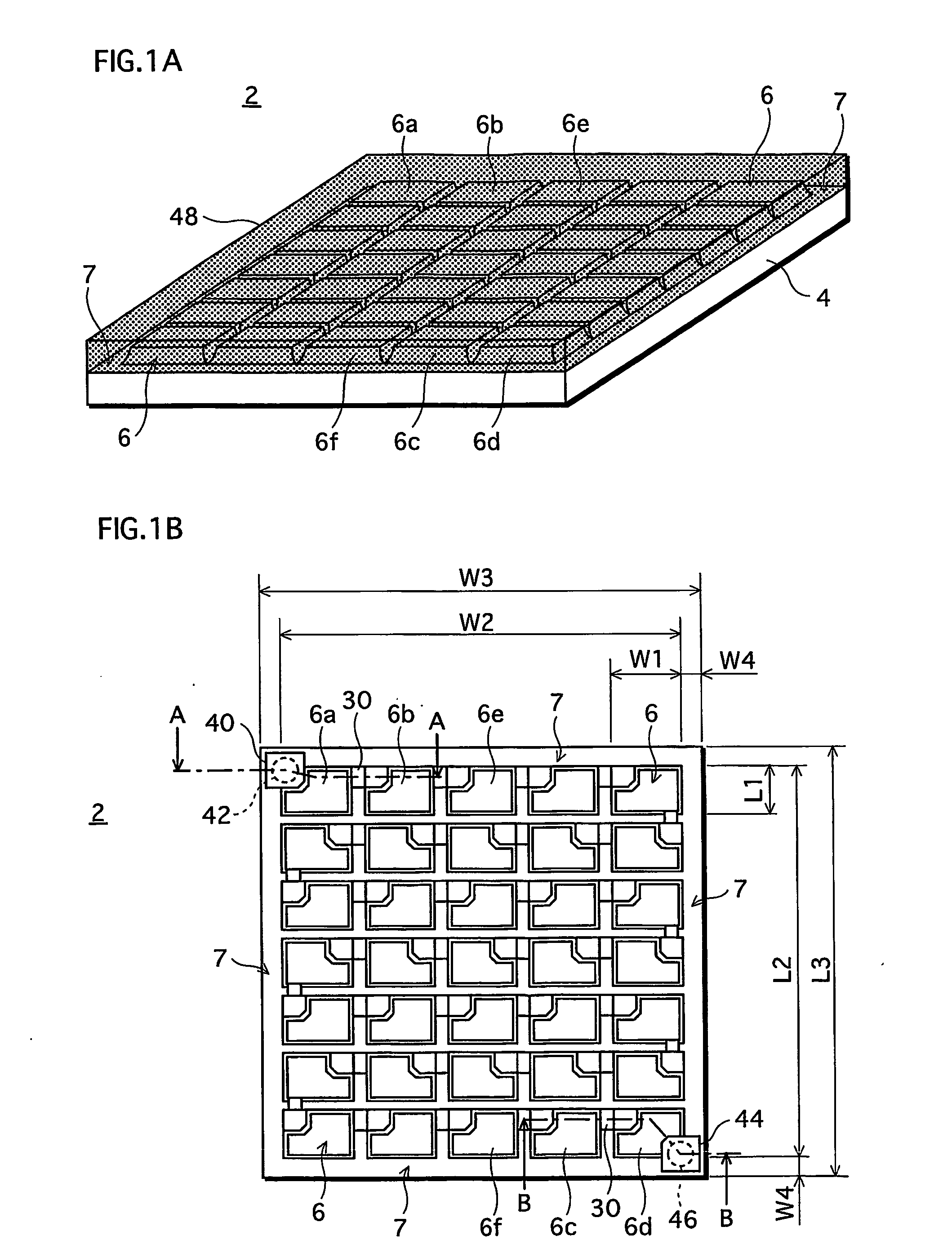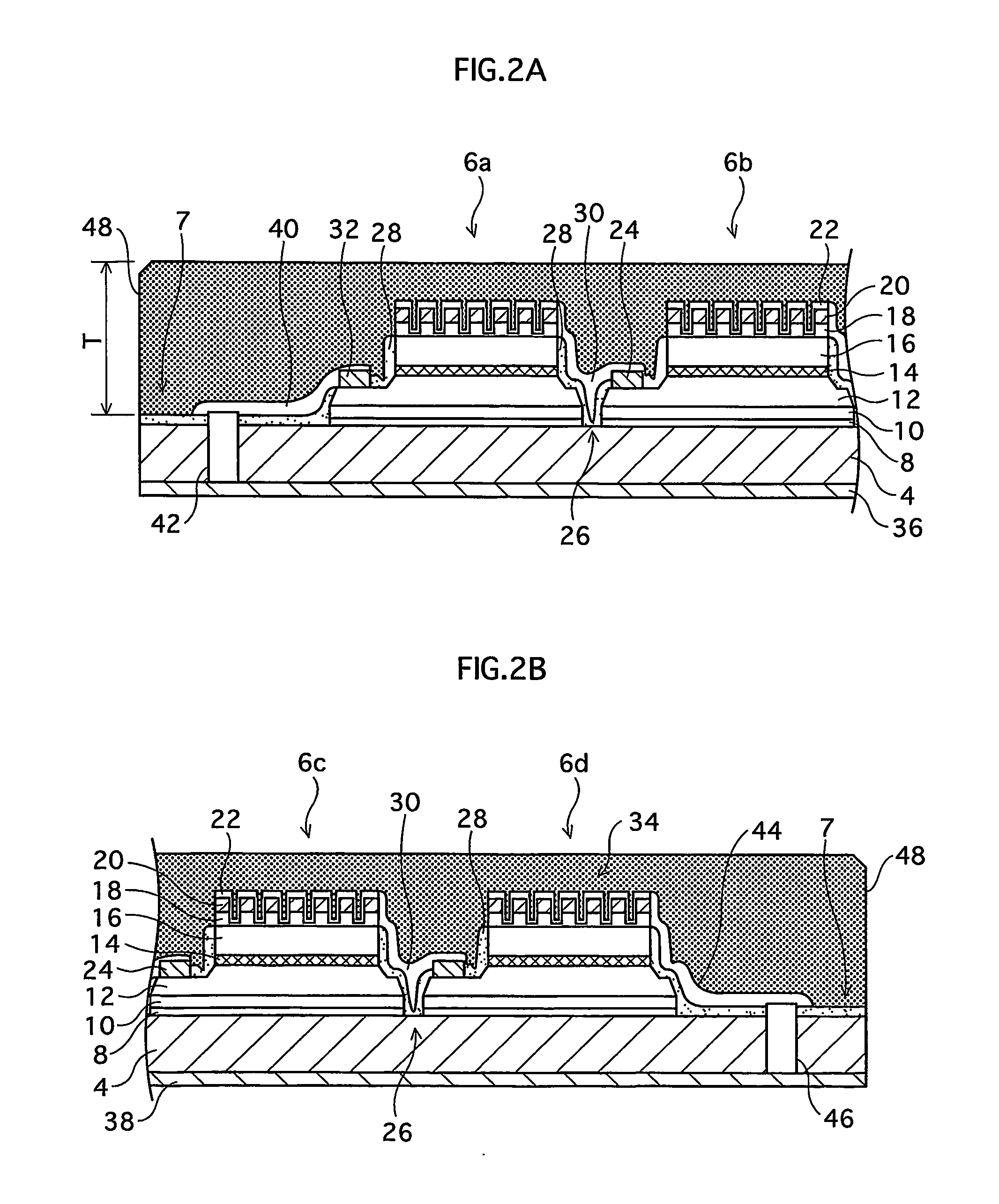Semiconductor light emitting device, light emitting module, lighting apparatus, display element and manufacturing method of semiconductor light emitting device
a semiconductor light emitting device and semiconductor light technology, applied in semiconductor devices for light sources, semiconductor/solid-state device details, lighting and heating apparatus, etc., can solve the problems of poor optical performance of white led manufactured in the above-descried manner, inability to achieve desired color temperature, uneven thickness of phosphor film, etc., to achieve the effect of not increasing the size of the semiconductor light emitting device and improving the ratio of accepted finished products
- Summary
- Abstract
- Description
- Claims
- Application Information
AI Technical Summary
Benefits of technology
Problems solved by technology
Method used
Image
Examples
first embodiment
[0077]FIG. 1A is an external perspective view illustrating a construction of an LED array chip 2, which is one type of a semiconductor light emitting device, and FIG. 1B is a plan view illustrating the LED array chip 2. FIG. 1A mainly illustrates how LEDs 6 (mentioned later) are arranged in the LED array chip 2, and therefore does not show minute depressions and protrusions on surfaces of the LEDs 6. FIG. 1B illustrates the LED array chip after removing a phosphor film 48 (mentioned later).
[0078] As shown in FIGS. 1A and 1B, the LED array chip 2 is formed in such a manner that the LEDs 6 are arranged in a matrix of N rows and M columns (in the first embodiment, a matrix of seven rows and five columns, in total, 35 LEDs 6) on a non-doped (highly resistive) SiC substrate 4 which is a semiconductor substrate (hereinafter simply referred to as “an SiC substrate 4”). The LEDs 6 are light emitting elements each of which is formed by a multilayer epitaxial structure including a light emit...
first modification example of second embodiment
[0144]FIG. 14A is a plan view illustrating a white LED chip 2002 which is one type of a semiconductor light emitting device (hereinafter simply referred to as “an LED chip 2002”), FIG. 14B illustrates a cross-section of the LED chip 2002 along a line FF shown in FIG. 14A, and FIG. 14C is a bottom plan view illustrating the LED chip 2002. Here, FIG. 14A illustrates the LED chip 2002 after removing a phosphor film 2008 (shown in FIG. 14B and mentioned later). It should be noted that a reduced scale for each constituent is not uniform in any of the drawings including FIGS. 14A, 14B and 14C.
[0145] As shown in FIG. 14B, the LED chip 2002 is formed in such a manner that a multilayer epitaxial structure 2006 and the phosphor film 2008 are formed on a high-resistive Si substrate 2004 which is a base substrate (hereinafter referred to as “an Si substrate 2004”). A main surface of the Si substrate 2004 is slightly larger than a main surface of the multilayer epitaxial structure 2006. The mul...
second modification example of second embodiment
[0182] According to the first modification example of the second embodiment, the anode and cathode power supply terminals 2030 and 2032 are formed on the back main surface of the Si substrate 2004, which is a base substrate, in the LED chip 2002. In a white LED chip 2102 relating to a second modification example of the second embodiment, however, one power supply terminal (an anode power supply terminal in the second modification example) is formed on a back main surface of a base substrate, and the other power supply terminal (a cathode power supply terminal in the second modification example) is formed on a front main surface of the base substrate.
[0183] The LED chip 2102 is the same as the LED chip 2002, in terms of a composition and a thickness of each of layers constituting a multilayer epitaxial structure, and a composition of a phosphor film. However, the LED chip 2102 is different from the LED chip 2002 in terms of a construction of electrodes formed on both main surfaces o...
PUM
 Login to View More
Login to View More Abstract
Description
Claims
Application Information
 Login to View More
Login to View More - R&D
- Intellectual Property
- Life Sciences
- Materials
- Tech Scout
- Unparalleled Data Quality
- Higher Quality Content
- 60% Fewer Hallucinations
Browse by: Latest US Patents, China's latest patents, Technical Efficacy Thesaurus, Application Domain, Technology Topic, Popular Technical Reports.
© 2025 PatSnap. All rights reserved.Legal|Privacy policy|Modern Slavery Act Transparency Statement|Sitemap|About US| Contact US: help@patsnap.com



